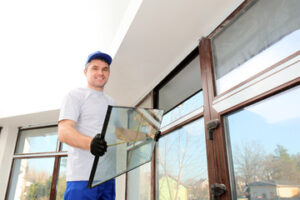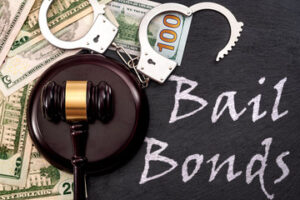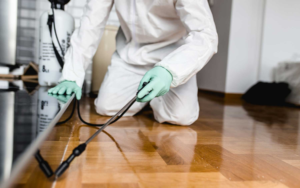Dog Training is a highly personal decision, so finding a trainer you trust is essential. Choosing a professional that understands the importance of assertive yet gentle leadership will help foster a relationship built on respect and trust.

Begin with simple behaviors and gradually increase the complexity of the task. Work in an environment that does not have many distractions. Read on Sierra Canine for more information.
Dog training is a very important skill that can help you and your pet live together more harmoniously. It can help you teach basic obedience commands like “sit” and “down.” It also helps you learn more about your dog’s behavior so that you can work with it and not against it. For example, if your dog digs, you can train them to go to a specific place in the yard instead of digging in the house or other outdoor areas where it is inappropriate and dangerous.
You need to understand that your dog (and all animals) learn best when they are positively reinforced for the behaviors you want to see. This means adding something the dog likes after they perform the desired behavior. For example, if you say “sit” and your dog sits down, you might start petting them to reward their good behavior. Alternatively, you could use verbal praise or play with them. Negative reinforcement, on the other hand, involves taking away something the dog doesn’t like. For example, if your dog snaps at you when they are trying to pet them, then you might stop petting them.
In the early stages of training, it is important to keep your dog leashed. This helps you control them when they are most susceptible to distractions. It also helps you train them to respond only to their cue, regardless of the type or level of distraction.
Eventually, you will move to the next level of training. During this stage, you gradually increase the amount of time your dog is left off-leash with the birds. You continue to monitor their behavior from afar and discipline them if necessary. Eventually, your goal is for the dog to ignore the birds completely.
This level of training is usually the longest, as it takes a very long time to train your dog not to stalk the birds and not to lunge for them as they fly to roost or perch on a branch. It is also the most critical for ensuring your dog’s safety and well-being. If you have not reached this point in your training, it is important to re-visit the beginning stages of training and build up from there.
Training Puppy
Having a well-trained puppy is essential to preventing future bad behaviors. Puppy training should be done consistently and with positive reinforcement (food treats, toys, play). This is much easier than trying to correct a bad behavior later on and is the best way to help your pup learn good habits.
Early training builds a foundation for a strong bond between the dog and owner. It also helps prevent future accidents, chewing and leash reactivity issues, and other problematic behaviors. Puppy classes offer a fun, interactive environment where your dog can learn to listen to you and follow commands.
Puppies have short attention spans, so it’s important to train them in small, manageable sessions. Many trainers suggest doing multiple short sessions throughout the day to ensure that your puppy isn’t overwhelmed or overexcited. The exact schedule will vary depending on your dog’s needs and temperament, so be sure to experiment until you find a training routine that works for you both.
The first step in puppy training is to teach your dog to sit, stay and down. This is a great time to begin using a clicker, which will give you an instant feedback signal to let the puppy know exactly what you want them to do. Once your dog knows these basics, you can start working on more complicated commands.
Another essential skill to teach your puppy is to come when called (also known as recall). This is the foundation for being able to take them with you on walks and other adventures. This can be tough for some dogs, so it’s a good idea to practice often and use lots of positive reinforcement (food treats, play, toys).
Potty training is a big part of any puppy training regimen. Be sure to keep your eye on the pup at all times, and make a point to take them outside when they seem ready to eliminate. If you catch them eliminating in the wrong place, don’t scold or punish them–this will only make them afraid of going outside and will only lead to more indoor accidents. Instead, immediately take them to their outdoor bathroom spot and praise them if they eliminate there. If they eliminate inside, be sure to clean the soiled area thoroughly to avoid future accidents.
Training Older Dogs
Many people find that their dog’s behaviour changes with age. They may be struggling with behaviours such as barking, pulling on the lead or being reactive to other dogs that they cannot interact with. Often, this is because they have been practicing the behaviour for most of their lives, so it can take longer to change established neural pathways in their brain. Alternatively, their health might have started to deteriorate and the behaviour is a sign of underlying issues. Whatever the reason, training your older dog can be just as beneficial for them as it is for a younger one.
Dogs’ ability to learn does not diminish with age, however, their physical capability and energy may decrease, so you will need to adapt training sessions accordingly. If your old dog has difficulty staying focused for long periods, it is best to train them in short bursts. Incorporate training into your daily routine so that your dog knows when it is training time and will be more likely to engage in the session.
In order to help your older dog concentrate during training, you will need to ensure they are well-rewarded for their efforts. Depending on the nature of their problem, they might be motivated by food, toys, scent or verbal praise. Experiment with different rewards to find what works for your dog. Also, consider any limitations they might have in terms of mobility or hearing. If they have a hearing loss, try to use hand signals as much as possible rather than voice commands.
Finally, be sure to provide a distraction-free environment and a comfortable place for them to do their training in. A quiet, safe space with low lighting is best to reduce the risk of them associating training with anxiety or fear.
During the training process, you will need to be patient and consistent. It can be easy to get frustrated when an old dog doesn’t respond as quickly as a puppy, but it is important to keep your cool and be patient. It can also be helpful to set realistic goals for your older dog, as it is less likely they will achieve the same results in just one training session.
Training Special Needs Dogs
Dogs that have been born with, or developed disabilities over time, can still be taught new behaviors. Trainers play a crucial role in providing the training and guidance that these dogs need to learn.
Dog trainers work with a wide variety of clients and dogs, from those seeking to train their own service dog, to people who are looking to teach a family dog basic obedience skills. A professional trainer will begin by assessing the dog and identifying its strengths and weaknesses, as well as any behavioral issues that need to be addressed.
Once a trainer has assessed the dog, they will create a personalized training plan and begin working with the handler to teach them the necessary skills. Some trainers will use positive reinforcement based techniques, while others may prefer to utilize more traditional correction-based training methods. The best trainers will be able to create a balanced training program that works for the dog and owner.
Some people with disabilities require a service dog to perform tasks that they are unable to do on their own, such as guiding the blind, alerting the deaf, pulling a wheelchair, reminding someone with mental illness to take their medications, calming a person who is having a seizure or a panic attack, and responding to sounds such as a doorbell, a ringing telephone or an alarm clock. These tasks are considered part of a person’s disability mitigating activities, and the Americans with Disabilities Act protects the right of disabled persons to have their service dog with them at all times.
While many of these service dogs are trained from puppyhood, some of them will not be able to start their public access training until they are older. It is also important to remember that health issues can arise at any point, and can seriously impact the progress of a service dog.
Training a service dog requires an incredible amount of time and commitment from both the dog and the handler. This can be challenging for people who live busy lives, and it may be necessary to hire a professional to help ensure that the training process is on track. Additionally, some people may need to purchase insurance to cover veterinary care and other unexpected expenses.








